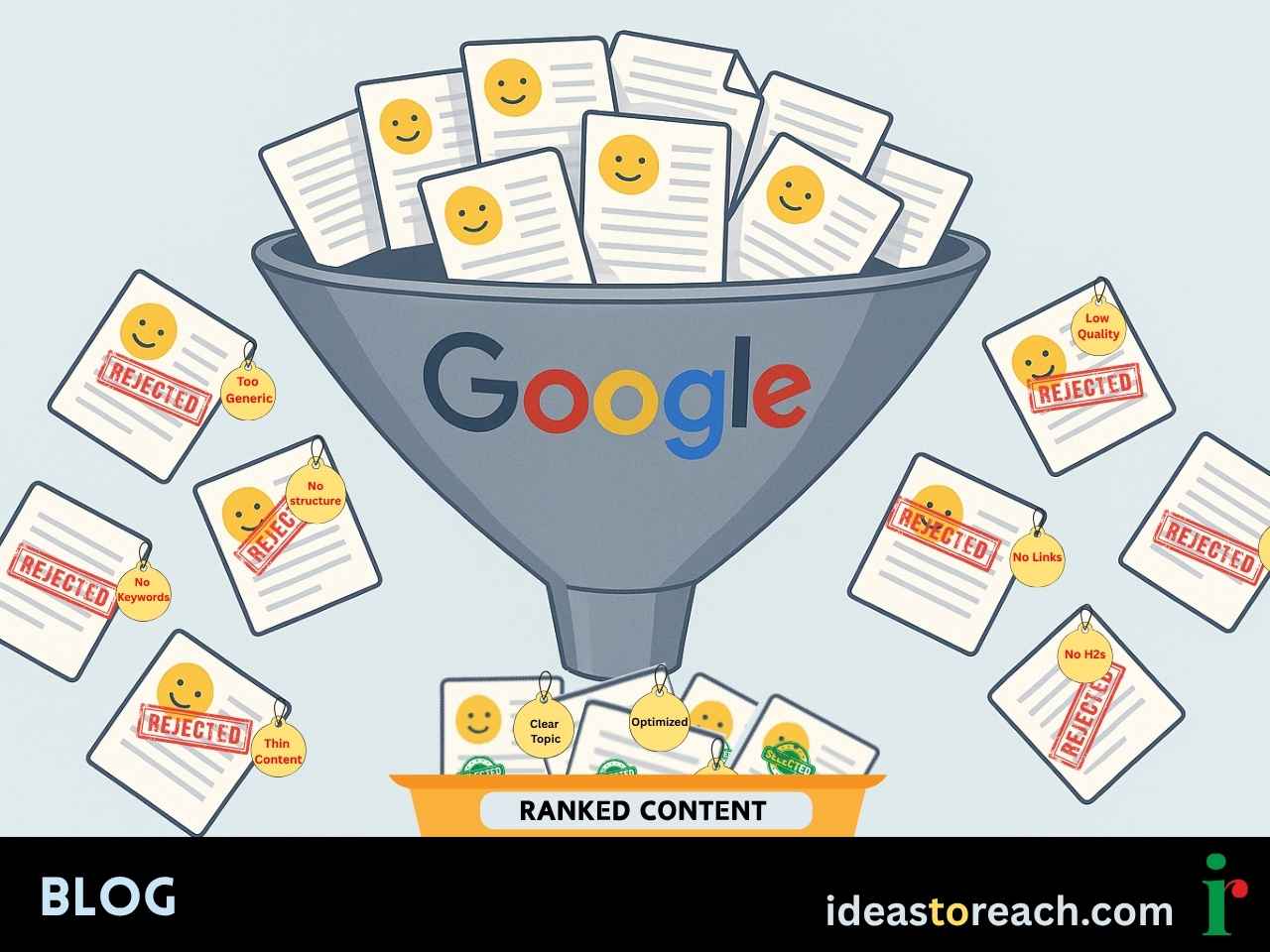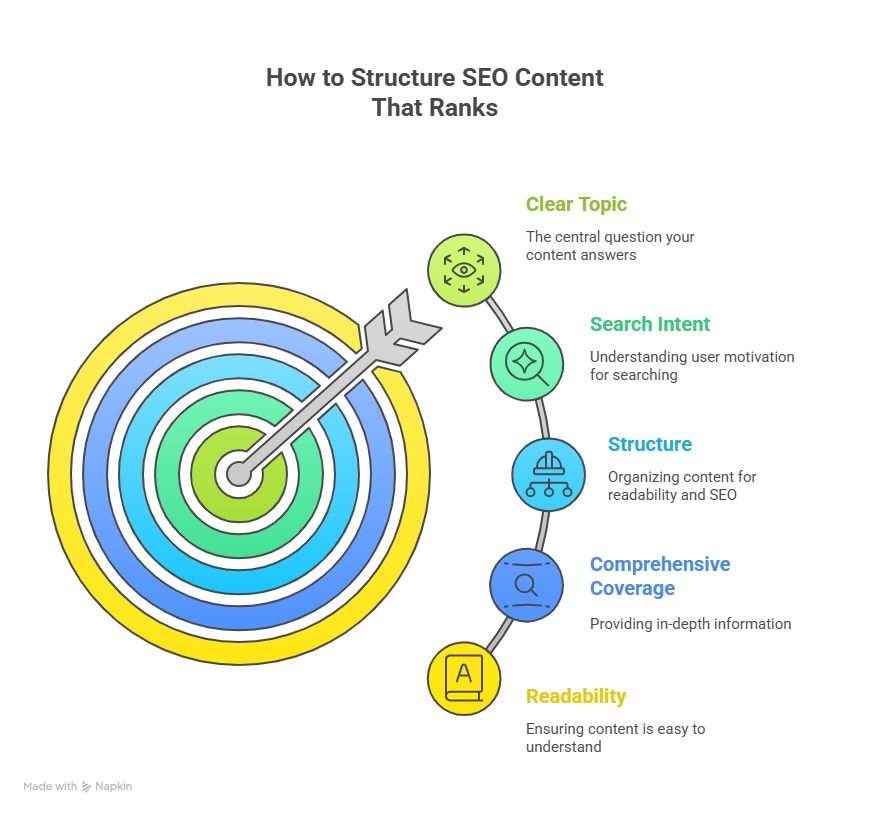
“Just write for humans.”
It’s a phrase repeated often in the world of content and SEO. The logic behind it sounds simple: if your content is useful and readable, Google will reward it.
But in reality, this advice is incomplete and often misleading.
Google is not a person. It processes content using Natural Language Processing (NLP), machine learning, and semantic analysis, which means it doesn’t just evaluate how well something is written, but what it covers, how it’s structured, and how clearly it aligns with the user’s search intent.
In this blog, let’s walk through what actually works when you’re writing SEO content today, especially if your goal is to rank, engage, and convert.
While humans are your ultimate readers, search engines are your gatekeepers. Google must first understand your content before it can recommend it to users.
And Google doesn’t “read” the way we do. It breaks content down using:
Let’s take a simple example.
Say you're writing a blog about Domain Authority (DA). You’ve used a catchy title, a witty introduction, and some general thoughts about “online presence.” But you’ve left out key details like:
Even if a human reader enjoys the tone, Google won’t be able to confidently say, “This page answers the search intent behind ‘how to increase domain authority.’” The result? You won’t rank.
This is why writing only for humans isn’t enough. Your content needs to satisfy both readers and search engines.
Every searcher goes through different stages, from learning something new, to evaluating options, to making a decision. High-performing content anticipates and aligns with the user’s search journey.
If you’d like a deeper look at how this journey influences content strategy, check out our blog on search sequences in SEO.
Here’s how to do that, continuing with the DA example:
At this stage, the reader is just starting out. They’re looking for a clear, beginner-friendly explanation. Your content should:
Structure matters. Headings like “What Is Domain Authority?” and “How Is DA Calculated?” guide both the reader and Google, clearly signaling the content’s relevance.
Here, the searcher wants action. They understand what DA is, and they’re looking for how to increase Domain Authority ethically so your content should:
This is where you show depth, which helps establish topical authority, a key part of how Google evaluates your site.
Now, the searcher is ready to act. They might be comparing service providers, tools, or agencies. Your content here should:
If you're selling services — whether SEO, SaaS, or anything else — mapping content to this stage helps drive conversions.
Google’s understanding of content is no longer just keyword-based. Thanks to NLP and machine learning, it now looks at:
To put it simply: Google isn’t just looking for good writing. It’s looking for comprehensive, well-structured, and intent-aligned content.
Here’s what to focus on instead of “writing for humans”:
Be precise. Don’t try to cover too much in one piece. Let each blog answer one primary question.
Is the searcher looking to learn something, compare options, or make a decision? Align your tone and content depth accordingly.
Use proper headings (H1, H2, H3), bullet points, short paragraphs, and internal linking to guide readers and signal page relationships to Google.
Include definitions, use cases, tools, examples, common mistakes, and next steps, not just surface-level content.
While technical clarity is key, your tone should still be human, approachable, easy to understand, and free from jargon overload.

A visual breakdown of the five essential elements every SEO blog needs to rank.
“Write for humans” is a good start, but today, it’s not enough.
To consistently rank and convert, you need content that:
Whether you're explaining Domain Authority or launching a service page, the winning formula is this:
Write for people. Structure for search. Think in stages.
Writing for the search journey means creating content that matches how users think and search over time. Instead of answering one query, it supports awareness, evaluation, and decision stages with the right depth and tone at each step.
Headings and structure help Google quickly understand what your page covers and how information is organised. Clear H1s, H2s, and logical sections improve crawlability, relevance, and user engagement.
Semantic keywords provide context and meaning around a topic. By using related terms naturally, you help Google understand subject depth without repeating the same keyword unnaturally.
Many blogs sound good but lack intent alignment, topical coverage, or structure. If Google can’t clearly identify what question the page answers, it won’t rank—no matter how polished the writing is.
The best structure includes a clear topic-focused H1, intent-based H2 sections, concise explanations, FAQs, and internal links. This format helps both users and search engines extract answers quickly.
Create content that is clear, complete, and intent-driven. Write for humans, structure for search engines, and guide users naturally from understanding to action with trust-building signals.